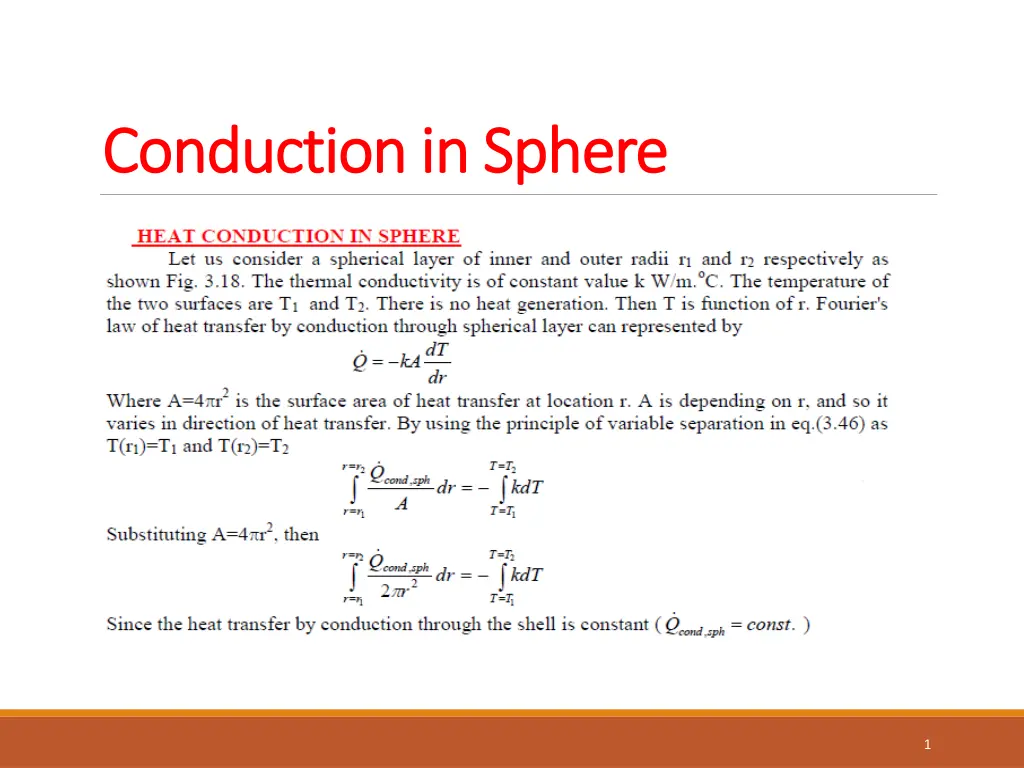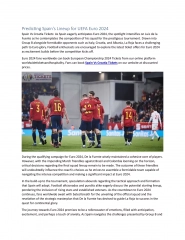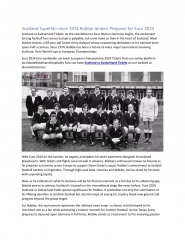
Heat Transfer in Spherical Systems
Explore conduction in spheres, examples, and multi-sphere scenarios. Learn to calculate heat transfer rates, latent heat, and overall coefficients in spherical tanks and shells. Understand complex heat transfer phenomena in various materials and conditions.
Download Presentation

Please find below an Image/Link to download the presentation.
The content on the website is provided AS IS for your information and personal use only. It may not be sold, licensed, or shared on other websites without obtaining consent from the author. If you encounter any issues during the download, it is possible that the publisher has removed the file from their server.
You are allowed to download the files provided on this website for personal or commercial use, subject to the condition that they are used lawfully. All files are the property of their respective owners.
The content on the website is provided AS IS for your information and personal use only. It may not be sold, licensed, or shared on other websites without obtaining consent from the author.
E N D
Presentation Transcript
Conduction in Sphere Conduction in Sphere 1
Conduction in Spheres Conduction in Spheres 3
Conduction in Spheres Conduction in Spheres 5
Examples Examples Example 10. A spherical tank is of a internal and external diameter (4m) and (4.04m)respectively. The tank material is stainless steel of thermal conductivity (16W/m.??). The tank contains iced water at (0??) and located in a room of temperature (23??). The heat transfer coefficient in and out the sphere are (90W/?2.??) and (8W/?2.??)respectively. Determine the heat transfer rate to the iced water in the tank and the ice mass that melts at (0??). the latent heat for ice water melting is (333.7kJ/kg) 6
Examples Examples 7
Examples Examples 8
Examples Examples Example 11. A sphere carrying steam at (240??)has an internal diameter of (2m). The spherical shell thickness is (0.075m). The thermal conductivity of the sphere material is (50W/?.?C). The convective heat transfer coefficient on the inside is (1.1W/?2.??). The sphere is covered by two insulation layers, one of (5cm)thickness of thermal conductivity of (0.15W/?.??) and the another (5cm) thickness and thermal conductivity of (0.475W/?.??). The outside is exposed to air of temperature (40??) with heat transfer coefficient of (18W/?2.??). Determine (a)The overall heat transfer coefficient based on the outer and inner area, (b) Heat transfer rate from the spherical wall, (c) also determine the temperature of the interface between the shell and insulation and between the two insulation layers. 11
Examples Examples 12
Examples Examples 13
Examples Examples 14
Examples Examples 15
Critical Thickness of Insulation Critical Thickness of Insulation 16
Critical thickness of insulation Critical thickness of insulation 17
Critical Thickness of Insulation Critical Thickness of Insulation 18
Critical thickness of insulation Critical thickness of insulation 19
Examples Example 12. Copper pipe carrying refrigerant at (- 25oC)of (0.01m)radius is exposed to convection at (30W/?2.??) and air temperature of (25??). An insulation of thermal conductivity (0.6W/m.??). Find the critical radius of the insulation. Find also the heat transfer rate at different thickness of the insulation from (0.0cm) to (2.0cm) by (0.2cm) step. Draw the result of the relation between heat transfer and the insulation radius. 20
Example Example 21
Examples Examples 22






















